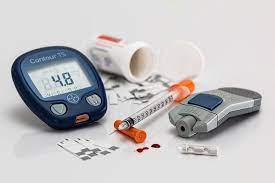Diabetics can get life insurance, although the cost may be relatively higher than in non-diabetic cases. Also, the cost of life insurance varies for type 1 and Type 2 diabetics, as you’ll see later on. Nevertheless, getting an insurance life policy can help guarantee your loved ones a secure financial future; so, it’s a worthwhile venture. We’ll go through the different life insurance policies for diabetics in this guide, explaining how they – whole life and term life policies- work for your diabetes type.
Can I Get Life Insurance as a Diabetic?
Yes, you can get life insurance with diabetes, and possibly at a competitive rate. However, different companies have different policies regarding life insurance for diabetics. Some factors will determine your policy and pricing options. These include: the type of diabetes you have, the type of policy you want, how long you’ve had diabetes, and how well you manage it.
What Types of Life Insurance are Available to Diabetics?
The sorts of life insurance you are eligible for will vary depending on the insurer and your circumstances. If your diabetes is under control and you’re in good health, you might be able to get standard coverage. Otherwise, diabetics can check into certain atypical life insurance policies.
Term And Whole Life Insurance For Diabetics
If you keep your diabetes under control, you may be able to qualify for a typical term or permanent life insurance policies at competitive rates. Term life insurance is less expensive and only provides coverage if you die within a certain number of years. On the other hand, permanent life insurance is meant to give coverage regardless of when you die.
Final Expense Life Insurance For Diabetics
As the name implies, these plans work to assist your loved ones in paying for your final medical bills, funeral expenditures, and other end-of-life costs after your death. With well-managed diabetes, you can qualify for a final expense policy, often known as burial insurance, just like you can for an ordinary term and permanent policies. Individuals over the age of 50 are more likely to obtain final expense insurance. Hence, it’s crucial to keep as healthy as possible even as you age if you plan to buy a policy later in life. In general, presuming your diabetes is under control, the younger and healthier you are when applying for life insurance, the more economical your selections will be.
Simplified Issue Life Insurance For Diabetics
If your medical exam results are limiting your standard life insurance policy options due to diabetes, a simplified issue policy allows you to apply without a medical exam by completing a health survey and answering medical questions. A simplified issue policy may not be much more expensive than a fully underwritten policy. Also, it may be suitable for diabetics in good overall health.
Guaranteed Issue Life Insurance For Diabetics
Guaranteed-issue policies are more expensive and have fewer coverage options, but you cannot be denied because of your health. Consider this option if you have difficulty qualifying for other types of life insurance because you are older, in poor health, or your diabetes is difficult to manage.
What Factors Do Insurance Companies Consider When You Have Diabetes?
When looking for the best diabetic life insurance, it’s critical to understand what characteristics insurers consider when determining your eligibility. When applying for diabetes life insurance, be prepared to provide the following information:
#1. Age at diagnosis
This is the age at which you were diagnosed of diabetes. The older you were when you were diagnosed, the lower your life insurance rate will be.
#2. Diabetes Type
The majority of diabetes cases in America are Type 2, and insurers typically offer lower rates than Type 1 diabetics. This is primarily due to the fact that Type 2 diabetes is more easily controlled through diet and lifestyle choices, whereas Type 1 diabetes is insulin-dependent. Unless they apply for guaranteed-issue life insurance, most carriers will not approve someone with gestational diabetes.
#3. Treatment Plans
While treatment plans differ, a life insurance provider will consider how well you manage your diabetes. If you keep your diabetes and blood sugar under control with medication, regular doctor visits, and a healthy lifestyle and diet, you’ll have a better chance of getting the best diabetic life insurance rates.
#4. Family History
Your parents’ and siblings’ health histories can also influence your life insurance eligibility and rate. If members of your immediate family died before the age of 60, had diabetes, or had complicated health histories, a life insurance company may view you as too risky to insure, especially if genetic conditions are involved.
#5. Your Well-Being
When people with diabetes apply for life insurance, insurers consider their overall health. If you have high blood pressure or are overweight, your rates may skyrocket or you may be denied coverage. Another contributing factor is alcohol consumption, as excessive consumption can lead to diabetes-related problems such as retinopathy, a diabetic eye disease.
Why is Timing Important When It Comes to Life Insurance For Diabetics?
When you apply for life insurance with diabetes, the timing of your application can affect which policies and rates you qualify for. Here are some examples of how you might use timing to your advantage when applying for life insurance with diabetes:
- Get life insurance before you get diabetes. If you have a life insurance policy before you get diabetes, your policy premiums will be lower than if you try to get life insurance after you’ve developed diabetes. However, don’t try to conceal a diabetes diagnosis from your life insurance provider when applying. If you do, it may be considered life insurance fraud, and your policy may be canceled with no refund.
- Wait for gestational diabetes to resolve. If you have gestational diabetes and are considering life insurance, delaying your application may result in more options at lower prices. Gestational diabetes is usually only temporary. If you’re otherwise healthy, your life insurance quote will most likely be less expensive once your gestational diabetes resolves.
- Wait until your diabetes is under control. Though life insurance rates for diabetics are generally higher than for non-diabetics, demonstrating that you’re in good health and managing your diabetes well over time can help you get the best rates. For example, if you’ve kept your blood glucose and A1C levels stable and within the range recommended by your doctor for a year, your insurer may view your medical exam results more favorably. This may result in more coverage options and lower prices than if you applied when your condition was more unstable.
Is it Possible to Get Life insurance For Type 1 or Type 2 Diabetics?
People with Type 1 or Type 2 diabetes can obtain life insurance coverage. However, the policies you’ll be eligible for and the ease of the process will vary depending on your type of diabetes, the age you were diagnosed, and how it’s managed.
Someone diagnosed with Type 2 diabetes later in life who is able to control it solely via diet and exercise will most likely qualify for the best life insurance rates. If you are insulin-dependent or have had diabetes issues, you can still purchase life insurance. But in this case, your coverage options may be limited.
How Your Diabetes Type Affects Your Life Insurance
If you have diabetes, you can buy life insurance. However, your coverage selections may be limited, and a policy will almost certainly cost more because insurers will view you as a higher risk. The type of diabetes you have, along with other health problems, will have a considerable impact on how life insurance companies analyze your application. This is because each form of diabetes impacts your health differently.
Life Insurance For Type 1 Diabetics
Insurers consider Type 1 diabetics to be at a higher risk than Type 2 diabetics. Hence, Type 1 diabetics may have a more difficult time obtaining life insurance. Type 1 diabetes is considered less manageable by life insurance, particularly because it frequently requires insulin to regulate.
When evaluating risk, life insurance companies consider the age of diagnosis, because a diagnosis later in life means fewer years when it will impact your body and health. However, because Type 1 diabetes is frequently diagnosed in youngsters or teenagers, you would be considered a higher risk when applying for life insurance.
Life Insurance For Type 2 Diabetics
Life insurance companies consider type 2 diabetics to be a reduced risk than Type 1 diabetics, especially if you can manage it with lifestyle changes or oral medication and have had no complications. Insurers are more likely to judge you favorably because it is frequently diagnosed in maturity. As long as you’re otherwise healthy and haven’t had any difficulties, having Type 2 diabetes should not preclude you from obtaining a policy. Keep in mind, though, that it will damage your life insurance rating and raise your premium.
Policy classification
Term life insurance policies are the most affordable in terms of cost per dollar of coverage since they are limited in duration, such as 10 or 20 years, and have no cash value. For example, if you’re concerned about your children’s ability to pay for college if you die as a result of diabetic complications, you can consider purchasing a term coverage that runs into their maturity. Furthermore, most term policies allow you to convert to a permanent policy without additional underwriting. This means that future diabetic complications will not be considered if your circumstances change.
A whole life insurance policy, on the other hand, may be preferable if you know you want to leave an inheritance or ensure that your spouse receives assistance regardless of when you die. Just keep in mind that permanent life insurance policies with a cash value component, such as universal and whole life insurance, are the most expensive options.
Life insurance with no medical exam vs. fully underwritten life insurance For Diabetics
Diabetics can acquire term or whole life insurance policies without a medical exam. However, these plans are more expensive and have a limited level of coverage.
No-medical-exam term plans normally provide no more than $500,000 in coverage. In contrast, no-exam whole-life policies typically provide no more than $50,000 in coverage. If you prefer not to have a medical exam, the insurer will still want you to complete a diabetic questionnaire and provide records from your doctors. So, even if you don’t have a paramedical exam, your insurer will almost certainly find out if your diabetes isn’t well controlled or if you’ve been diagnosed with complications.
A no-medical-exam life insurance policy, on the other hand, may be your best option if you suspect you have undiagnosed diabetes-related side effects or complications. Assume you’ve had numbness in your hands and feet but haven’t been diagnosed with neuropathy. You could be denied a policy if you applied for a fully underwritten term life insurance policy and the difficulty was detected during the paramedical test.
How Can Diabetics Save Money on Insurance?
Diabetes patients have a few options for lowering their life insurance prices.
If you smoke, for example, quitting could cut your rates. Keep in mind, however, that you will not be eligible for nonsmoker rates until you have been tobacco-free for at least 12 months.
You can also reduce your life insurance costs by utilizing health technology, such as a wearable device that tracks and encourages healthy lifestyle habits. Some companies, such as John Hancock, even provide life insurance discounts if you improve your health and allow them to monitor your activities.
Good diabetes management and treatment plans are also essential for maintaining diabetes control and reducing future complications. Anything you can do to lower your mortality risk is beneficial in the eyes of a life insurance company. Hence, you will frequently be rewarded with lower policy costs.
What Does Your A1C Have To Be To Get Life Insurance?
The A1C level reflects the severity of your diabetes. The optimal level to have when purchasing a life insurance policy is 7. Patients with A1C levels up to 8.5, on the other hand, can apply for life insurance.
In Conclusion,
As much as getting life insurance as a diabetic is way costlier than for non-diabetics, it is worth giving a try. If you follow the simple measures we have given in this guide, you might be able to cut some costs while obtaining life insurance.
Frequently Asked Questions
Can you get life insurance if you are diabetic?
Yes, diabetic patients can qualify for life insurance.
Can you get whole life insurance with Type 1 diabetes?
Although you can get whole life insurance with diabetes, some insurance providers may not offer you whole life coverage if you have type 1 diabetes or other health issues.
Do you have to declare diabetes to a car insurance?
When applying for car insurance, you must declare all “material facts.” Diabetes is a material fact that you must declare.
Related Articles
- LIMITED PAY LIFE POLICY: Everything You Need To Know
- IS LIFE INSURANCE WORTH IT? What You Should Know About Life Insurance
- WHAT IS VOLUNTARY LIFE INSURANCE?
- The Life Insurance Awareness Month: Everything You Should Know
- BEST WHOLE HOUSE HUMIDIFIER: Top 13 Options In 2023






